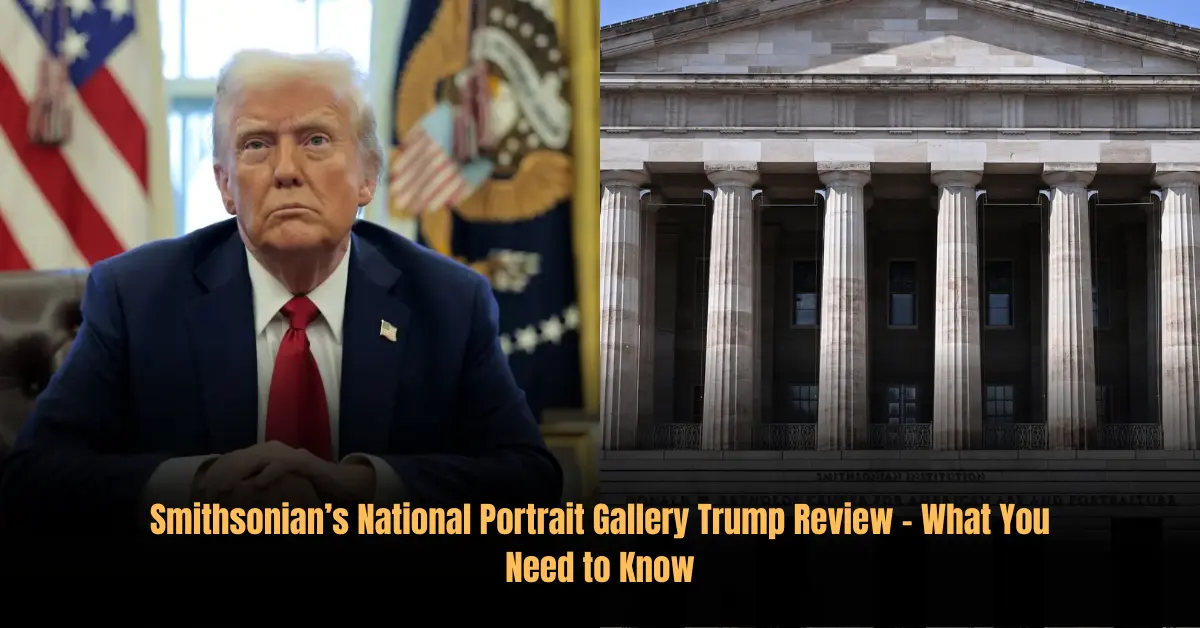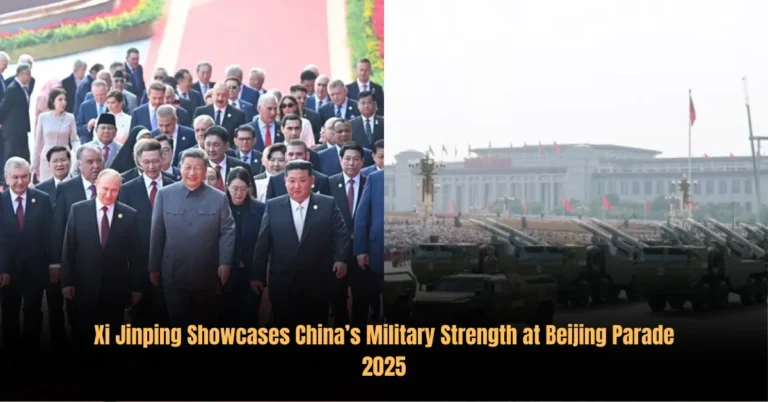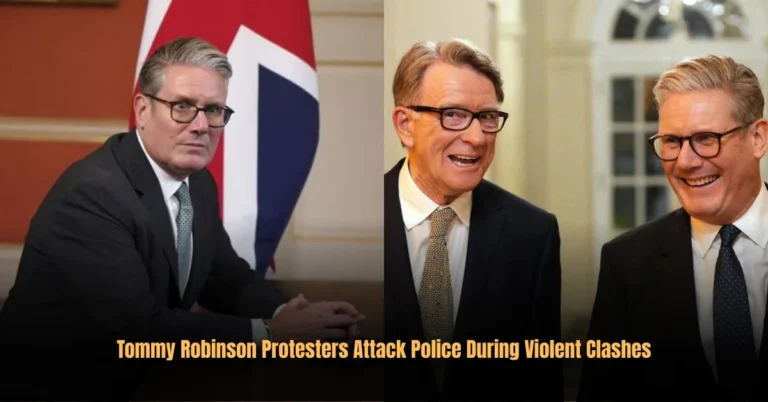Smithsonian’s National Portrait Gallery Trump Review – What You Need to Know
Smithsonian’s National Portrait Gallery Trump Review: What You Need to Know in 2025
The Smithsonian’s National Portrait Gallery is in Washington, D.C. It is not only a museum. It is a place that tells the story of America through faces of important people. One of the biggest parts of this gallery is the U.S. presidential portraits. These portraits show every president of the United States.
Now, people are talking a lot about the Donald Trump portrait. The gallery did a review about how to show his portrait. This started a big conversation about art, history, and politics. Some people like it, some do not.
In this article, we explain the Trump portrait, why it is important, and what people are saying. If you want to visit the gallery or just want to know about the Trump art review in 2025, this guide is for you.
The Smithsonian’s National Portrait Gallery and Presidential History
Behind the Scenes of an American Institution
The National Portrait Gallery is inside a very old building called the Old Patent Office. It opened in 1962. The gallery has portraits of many famous Americans, not only presidents. You can see artists, scientists, writers, leaders, and performers.
But the presidential portraits are very special. This is the only place, outside of the White House, where you can see all U.S. presidents in portraits. People trust the gallery because it tries to be fair and true to history.
How Presidential Portraits Shape Our National Story
A portrait is more than paint on a wall. A portrait shows the time, the mood, and the leader’s personality.
For example:
- George Washington’s portrait looks serious and strong.
- Barack Obama’s portrait looks modern and colorful.
Each style shows how America changed. That is why people care about Trump’s portrait too. His portrait also brings debate. Art can start conversations about history and leadership.
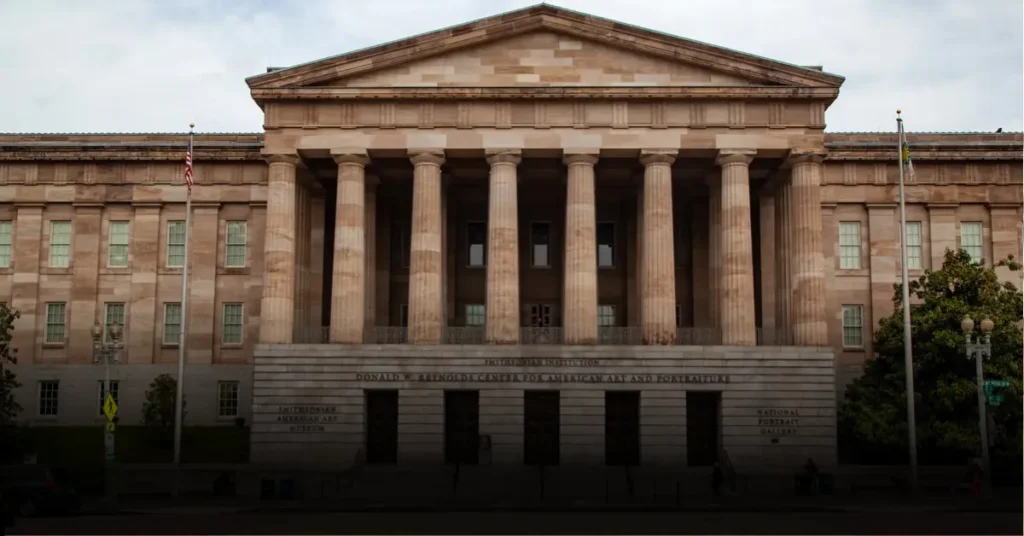
The Trump Portrait’s Grand Unveiling
The Moment the World Saw History
When the Trump portrait was shown, many people were curious. Some presidents had only one portrait, but Trump’s collection has more than one. That is because Trump’s image is big in both politics and media.
The official Trump painting got the most attention. People talked about it on TV, in newspapers, and online.
Also Read: Mental Health Crisis 2025: Over a Billion People Affected, Urgent Call to Scale Up Services
What We Know About the Official Commission
The Smithsonian always follows a tradition. The gallery and the president choose an artist together. The artist should capture the real personality of the president.
For Trump’s portrait, people were interested in which artist would paint him. Many wanted to know how the artist would show his style and face. The choice became a big discussion in the art world.
The Artists Behind the Canvas
More Than One Portrait: Untangling the Collection
The Trump collection in the Smithsonian is not just one painting. It includes older pictures of Trump as well.
For example, in 1989, Michael O’Brien took a photo of Trump when he was a young businessman. That photo is also in the gallery. Later, more portraits and photos were added. Together, they show Trump’s journey from businessman to president.
The Photographer’s Lens and Artistic Visiona
Modern collections also use photography. Photos can show presidents in different ways.
One famous photo of Trump was taken by Pari Dukovic for Time magazine. It shows him at the Resolute Desk in the Oval Office. This looks very different from a formal studio portrait. Each photo or painting tells a new story.
A Deep Dive into the Artwork
Analyzing the Artistic Choices and Symbolism
Critics look closely at the Trump portrait. They ask questions like:
- What do the colors mean?
- Why is he standing or sitting in a certain way?
- What does the background show?
Every detail in the portrait can carry meaning. Some see power. Some see anger. Some see confidence.
Subtle Details that Spark Conversation
Little things matter a lot. The light, the objects, the clothes—all can send messages.
In Trump’s portrait, people noticed small details. These details keep people talking. They also make the portrait important for history and debate.
The Public’s First Impression
Initial Reactions from the Art World and Media
When a new presidential portrait is shown, it is big news. Newspapers like The New York Times and The Independent wrote reviews about Trump’s portrait.
Some critics liked the work. Some did not. Their views shaped how the public thought about it.
Social Media Explodes: A Viral Conversation
On social media, the Trump portrait became viral. People on Twitter, Instagram, and Facebook shared photos and opinions.
Some praised it. Some made jokes. Others made memes. Hashtags about the portrait trended for days. The debate went far beyond the museum walls.
A Look at the Critical Reception
Professional Art Critics Weigh In
After the first reactions, art critics gave deeper reviews. They compared Trump’s portrait to older presidential portraits, like Washington’s or Lincoln’s.
They asked: does Trump’s portrait add something important to history? Does it stand as strong as others?
These reviews gave people more context and helped them see the portrait in a bigger picture.
The Portrait as a Political Lightning Rod
Trump’s portrait was always going to be political. His presidency divided people. So his portrait also became part of that divide.
Supporters said it shows respect for him as a president. Critics said it only shows more problems. In the end, the portrait became not only art but also part of a political fight.
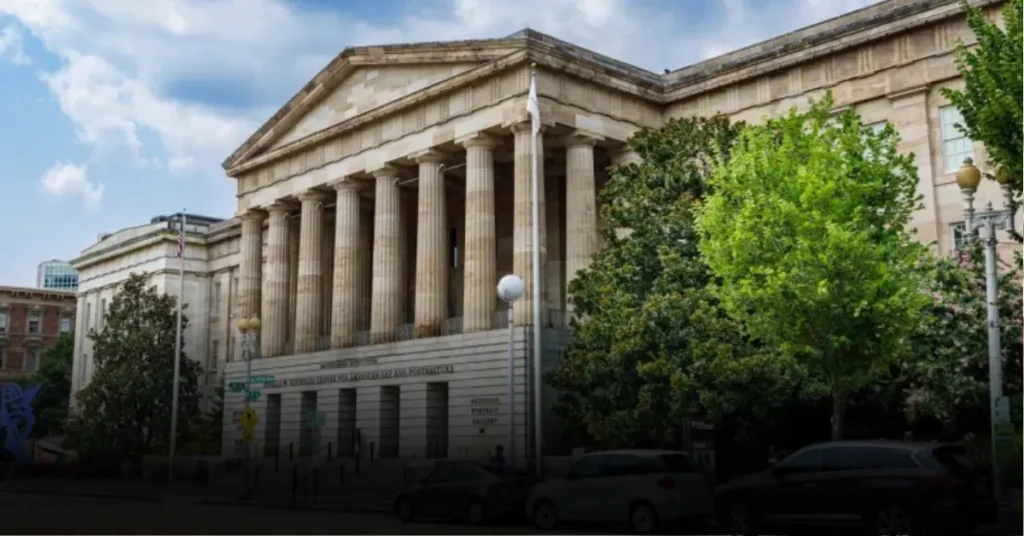
Breaking Down the Controversies
A History of Disputes: From the Artist to the Caption
Presidential portraits have always brought debate. Every part of the process, from choosing the artist to writing the text, can cause arguments. Some people disagree with the style of the artist. Others focus on the words written with the portrait.
In the case of the Trump portrait at the Smithsonian, both issues have been part of the controversy. Some say the artist’s choices do not show Trump the way they expected. Others believe the text near the portrait is unfair or biased.
The Smithsonian tries to balance two things: telling history accurately and respecting public opinion. This balance is not easy. Every decision can upset one group or another. The challenge is ongoing and will likely continue with future portraits.
How the Portrait Fits into a Broader Cultural Debate
The arguments about Trump’s portrait are not only about art. They are part of a much bigger cultural discussion in America. People debate how history should be remembered, how leaders should be represented, and what role public museums should play.
The Smithsonian is not just an art gallery. It is also a public institution that tries to tell the story of America. Its job is to include all sides of history, even the controversial parts. The Trump portrait is just one example of this wider cultural struggle.
The Art of Presidential Legacies
Comparing Trump’s Portrait to Past Presidents
To understand why Trump’s portrait matters, it helps to look at portraits of past presidents. For example, the famous unfinished portrait of George Washington by Gilbert Stuart is still admired today. It shows Washington at an important moment in American history.
More recently, Barack and Michelle Obama’s portraits by Kehinde Wiley and Amy Sherald brought latest styles. They used bright colors and symbolism that were very change from older portraits. These all portraits showed that presidential art is not fixed. It different with time.
The Trump portrait also adds something new to this tradition. Each portrait, whether old or new, shows how Americans think about their leaders and their history.
From George Washington to Barack Obama: The Evolving Style of Presidential Art
Presidential portraits have changed over the centuries. In the early days, most were formal oil paintings. Later, photography became common. Today, portraits often look more relaxed and modern.
These changes show how art has evolved. They also show how the public’s view of presidents has changed. Long ago, presidents were often shown as larger-than-life figures. Now, portraits sometimes show them as more human and personal.
The Smithsonian’s “America’s Presidents” exhibition shows this timeline clearly. It allows visitors to see how both art and politics have moved through history.
Understanding the Gallery’s Role
Beyond the Portrait: The Smithsonian’s Broader Mission
The Smithsonian is not just about single portraits. Its mission is much bigger. It wants to share knowledge and history with the public. It wants to give context to American stories and help people learn about the past.
The Smithsonian’s art collections are used by scholars, students, and visitors. They are not designed to make everyone happy. Instead, they are designed to show history in a thoughtful and honest way.
Why the National Portrait Gallery’s Independence Matters
The National Portrait Gallery must stay independent. This means it makes decisions about art and history without being controlled by politics.
This independence is very important. Without it, the gallery could lose credibility. If politicians forced curators to change exhibits, the gallery would no longer be trusted.
The Trump portrait debate has shown how important this independence is. Many people are watching closely to see how the gallery handles pressure. Protecting independence is key to keeping the Smithsonian respected.
The Debate Over Historical Narratives
What’s “Woke” in the White House and Beyond?
The Trump portrait has become part of a bigger debate about history and politics. Some critics say museums are too focused on what they call “woke” ideas. By this, they mean museums show history in ways that include race, gender, and controversy instead of only celebrating achievements.
Others believe this broader view is necessary. They argue that American history cannot be told honestly without including the difficult parts. The Smithsonian has chosen to stand by its mission of telling a “full and balanced story.”
The Battle for Control of American History
The argument about Trump’s portrait is not only about art. It is about who gets to control American history. Public museums, like the Smithsonian, are at the center of this battle.
The Smithsonian Trump portrait review 2025 shows this struggle clearly. Some want history to be simple and positive. Others want it to include the conflicts and controversies. This battle over history will likely continue for many years.
What This Means for the Future
The Legacy of a Controversial Portrait
No matter what people think of Trump, his portrait will leave a mark. It will not only be remembered for how it looks but also for the arguments it created.
This portrait will always remind people of a divided time in American history. It will be studied and talked about long after today’s debates are over.
Art and Politics: Where Do We Go From Here?
The Trump portrait shows how closely art and politics are connected. Art is not only decoration; it reflects its time. It forces people to think about hard questions.
The National Portrait Gallery will keep being a place for these discussions. Visitors will continue to see history through many perspectives. The gallery will give space for all sides of the story.
Also Read: Xi Jinping Showcases China’s Military Strength at Beijing Parade 2025
Your Visit to the National Portrait Gallery
Tips for Seeing the Portrait in Person
If you want to see the Trump portrait yourself, you can visit the National Portrait Gallery in Washington, D.C. The museum is free, but it can get crowded. Checking the website before you go will help you plan your trip.
Try to visit during quieter hours if you want more space to look at the portrait. The Trump exhibition is popular, so you may need to be patient with crowds.
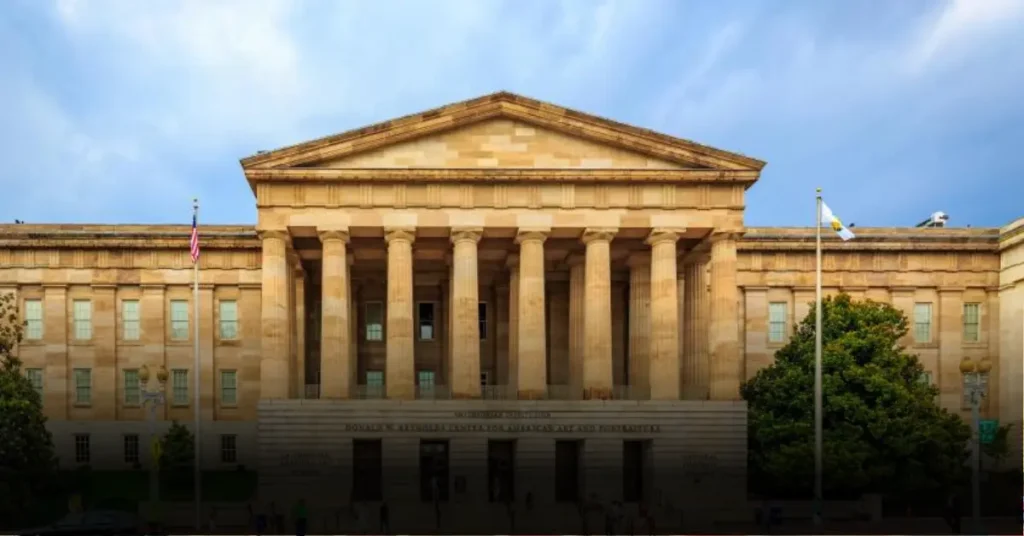
Beyond the Portrait: Exploring the Exhibit
The Trump portrait is only one part of the gallery. The “America’s Presidents” exhibition is also worth seeing. It shows portraits of every U.S. president in order.
The Smithsonian also has many other collections. You can see portraits of writers, inventors, activists, and other important Americans. To plan your visit, the gallery offers an online guide with maps and exhibition details.
Final Thoughts on the Review
Why This Portrait Will Be Talked About for Years to Come
The Trump portrait review in 2025 will remain important for years. The debates around it have made it more than just a piece of art. It is now part of the political and cultural memory of the country.
This portrait will be studied not only by art lovers but also by historians and political experts. It will always carry the weight of its controversy.
The Full Picture: A Look Back at the Entire Story
From the moment the portrait was planned to the day it was displayed, the Trump portrait has been full of drama. Artists, curators, politicians, and the public all played a role in shaping its story.
By looking at the full picture, we can see why this portrait matters. It is not only about Trump. It is about how America tells its history and how institutions like the Smithsonian protect that history.
The National Portrait Gallery continues to serve as a place where these conversations happen. It reminds us that history is not simple. It is complex, and it is always open to debate.
Author Bio
This article was written by a team of experts in art history and cultural policy. Nourkri Abroad Team have years of experience studying how art, politics, and museums interact. Their insights come from academic research and practical knowledge of curation and public opinion.

